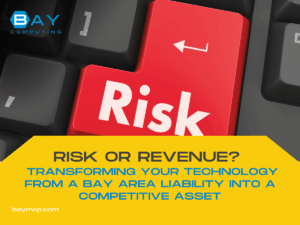Is your point of sale software at risk of being infected by malware?
Point of sale (POS) software is a common target for cybercriminals looking to steal payment data from businesses of all sizes. POS systems can be at risk of malware infection, especially if they use outdated software or lack strong security measures. Malware attackers often target these systems to access customer credit card and debit card information.
Hackers may use different methods to infect POS systems, such as exploiting system weaknesses or tricking businesses into downloading compromised software. Once infected, malware can quietly steal sensitive data without being detected for a long time. Business owners should stay alert and understand the risks, as POS malware continues to affect both small and large retailers.
Risks of Malware in Point of Sale Software
Point of sale (POS) software is a common target for cybercriminals. Malware infections can expose credit card data, cause business interruptions, and result in costly breaches or fines.
Common Malware Threats Targeting POS Systems
POS malware is designed to steal sensitive payment information. Some of the most common threats include RAM scrapers, which capture credit card data from system memory as transactions are processed. This information is then sent to criminals for use or sale.
Another type is keyloggers, which record keystrokes to steal administrator credentials or passwords. Some malware also exploits vulnerabilities to give attackers remote access, making it easier to install other malicious tools.
Criminals often use phishing emails or compromised websites to deliver this malware. Keeping software updated and limiting access can help reduce the risk of infection.
Vulnerabilities Specific to POS Software
POS systems often run on outdated or unsupported operating systems, making them attractive to attackers. Many businesses delay installing security patches, which leaves unpatched vulnerabilities open for longer.
Remote management features, if not properly secured, can act as entry points for attackers. Weak passwords or default credentials also make systems easy targets.
POS software that connects to other parts of the business network can spread malware farther. Attackers might use compromised third-party vendors to slip malware into the POS environment.
Table: Common POS Vulnerabilities
| Vulnerability Type | Description |
|---|---|
| Unpatched software | Missing security updates |
| Weak or default passwords | Easily guessed credentials |
| Remote access misconfiguration | Exposed admin tools |
| Third-party integrations | Insecure vendor connections |
Recent Real-World POS Malware Attacks
In the last few years, there have been several high-profile POS malware attacks. Retail chains and restaurants have reported customer credit card data being stolen through their POS systems.
For example, attackers have used malware like Alina and Dexter to steal millions of payment card records. These attacks often go undetected for months, causing significant financial and reputational harm.
One case involved malware loaded from insecure software updates. Attackers took advantage of lax network controls and gained access to thousands of sensitive card numbers before the breach was found. Some businesses have had to notify customers and pay substantial fines for failing to protect payment data.
Best Practices to Protect Point of Sale Software
Point of sale (POS) software is a key target for cyber attacks looking to steal payment and customer data. Proactive measures can greatly reduce the risk of malware infections and keep a business’s data safer.
Regular Software Updates and Patch Management
Keeping POS software and operating systems up to date is critical. Vendors often release patches to fix security weaknesses that hackers could exploit.
It is important to set up automatic updates if possible. When this is not an option, a set schedule for manual updates helps ensure nothing is missed.
Failing to update software leaves systems exposed to known threats. Attackers look for businesses running outdated software, so delaying patches increases risk.
Tips:
- Subscribe to security alerts from POS vendors.
- Check for updates weekly.
- Document updates and patches applied.
Using the latest security patches helps build a strong defense against malware.
Implementing Network Segmentation
Network segmentation separates the POS system from other business operations. This reduces the chance that a virus or malware outbreak in one part of the network spreads to the POS.
POS systems should never share a network with unsecured devices like public Wi-Fi or employee phones. Using firewalls or VLANs to isolate POS devices blocks unauthorized access.
Limiting the number of devices that can communicate with POS terminals is key. For added security, block POS systems from accessing the internet unless absolutely necessary.
Table: Simple Network Segmentation Example
| Zone | Devices |
|---|---|
| POS Network | POS terminals |
| Guest/Public Wi-Fi | Customer devices |
| Business Network | Office computers |
Proper segmentation helps contain malware and limits how far it can spread if an attack occurs.
Employee Security Training and Awareness
Employees often handle POS systems daily, so their actions can affect security. Regular training teaches them how to spot threats like suspicious email attachments or unknown devices.
Staff should know never to install unauthorized software or allow external USB devices to connect to POS terminals. Encourage strong, unique passwords and cover screen privacy around customers.
Training should cover what to do if staff notice anything strange—such as unexpected pop-ups or slow system performance.
Key reminders might include:
- Report suspicious devices or behaviors.
- Never share POS login details.
- Log out after each shift.
An informed staff is a strong line of defense against malware infections in POS environments.
Protect Your Point-of-Sale System with Bay Computing
Malware targeting point-of-sale software can lead to data breaches, downtime, and lost trust. At Bay Computing, we help businesses secure their POS systems with proactive solutions like patch management, network segmentation, and employee training.
Contact us today to safeguard your payment systems and keep customer data protected.




